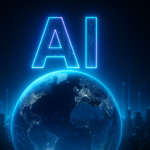Innovative approaches in software development are increasingly spotlighting vibe coding, which enables users to craft software through natural language instructions rather than traditional programming methods. Originating from a concept publicized by OpenAI co-founder Andrej Karpathy in 2025, vibe coding promises to extend software creation’s reach beyond technical experts, allowing broader participation in software building. This shift reflects a trend towards simplifying digital creation, making technology accessible to diverse user groups, some of whom may have zero coding experience, which could potentially reshape industries reliant on software development.
Initially, opportunities presented by vibe coding were limited, primarily reserved for simple applications due to its nascent stage. Over time, its potential applications have expanded, although impediments like technical debt and enterprise readiness continue to pose challenges. Traditional code review processes remain essential, as emphasized in early evaluations, where questions about efficiency and reliability surfaced. Comparable to previous technology adaptations, such as the adoption of low-code platforms, vibe coding similarly offers opportunities paired with transitional challenges, hinting at a transformative path.
How Does Vibe Coding Work?
By utilizing AI-driven systems, vibe coding transforms user-defined prompts into executable code, aiming to democratize software development. Non-technical individuals, like school children, have started creating applications without needing in-depth programming knowledge. This aspect taps into a significant user base, reflecting a shift from traditional reliance on professional developers. However, the approach raises concerns about the quality and longevity of the software due to potentially accumulating technical debt.
Why Is Enterprise Readiness a Concern?
For enterprise adoption, vibe coding tools need further sophistication. Current implementations often generate codes requiring meticulous reviews to ensure long-term stability, addressing issues of hidden costs associated with quick-solution coding. Cuvelier points out that while these tools are useful for simple applications, they aren’t fully prepared to meet enterprise needs yet. Predictably, developing an enterprise-ready version of vibe coding will require additional enhancements in reliability and maintainability to gain wider acceptance in more rigorous professional environments.
Advancements in vibe coding impact entrepreneurship significantly, allowing individuals from varied backgrounds to initiate projects previously hindered by technical barriers. This democratization fuels competition, focusing on product quality over pure technical capabilities. Emphasizing user experience, businesses potentially gain a competitive edge by delivering superior products, challenging incumbent software providers to innovate or risk obsolescence.
Educational realms might need adjustments to incorporate vibe coding, acknowledging its growing influence. Integrating vibe coding with traditional programming education has been suggested to prepare future developers better. Shifts in educational focus aim to cultivate a balance of manual coding skills with new, efficient techniques facilitated by AI advancements.
Significantly lowering software development costs aligns with Cuvelier’s projections, placing pressure on incumbents with rigid business models. The advent of accessible software development tools could transform how businesses approach their digital solutions, demanding a renewed focus on user-centric improvements to maintain competitiveness in evolving markets.
Future anticipations involve further examination of vibe coding’s widespread implications, as more sectors consider the integration of simpler coding solutions. Though the technology remains in an emergent phase, incremental innovations reveal clear directions towards broader, technology-driven inclusivity. As competitive pressures heighten, retaining users through impactful, quality-driven software solutions will be paramount.










